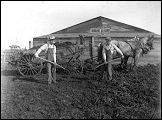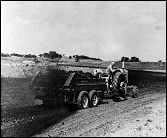The quality of life for Native Americans had its ups-and-downs, greatly influenced by seasonal and gradual climatic changes. Early European and American explorers, traders and immigrants were similarly affected as they moved out into a virgin landscape. Evolving technologies, procedures and techniques in all elements of society increasingly enabled residents to get a handle on their environment - moving beyond mere survival to basic sustenance and, on occasion, even a tenuous abundance.
The winds of change continued to mold and manipulate the quality of life for every resident as Minnesota matured from “frontier” status into an integral part of a blossoming, growing, United States of America.
The Dakota and Ojibway, who had been occupied with competing with each other, found themselves overwhelmed by the numbers and technologies of migrating white settlers. “Bad times” had come to stay. The newcomers often strove to settle and succeed through reckless consumption of the available natural resources. As resources were depleted, new approaches and technologies were tried in order to create and maintain the “good life”. The demands of new technology, business consolidations and world commerce were creating a fast-changing set of ground rules for Minnesota’s labor force. |
|
|
Good Times and Bad Times

Ole H. Graff farm near Marietta, Minnesota
Carl Graff (left) and Christ Ehlenz (right)
Spreading manure, ca 1910
Minnesota Historical Society

Spreading manure with Minneapolis-Moline
spreader pulled by tractor, ca. 1955
Minnesota Historical Society
|



